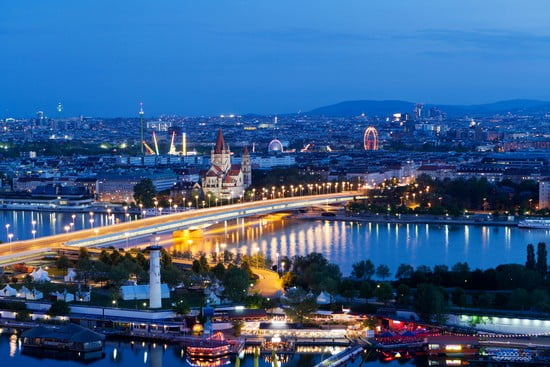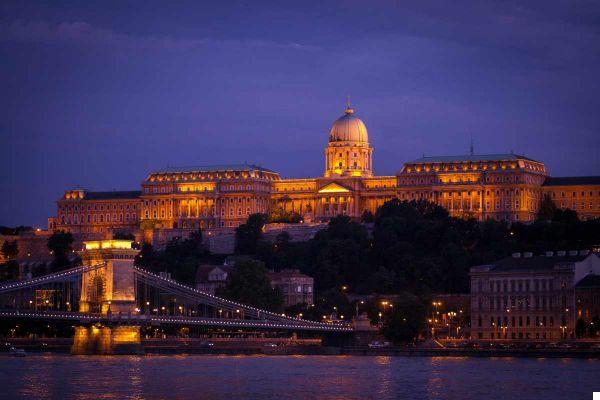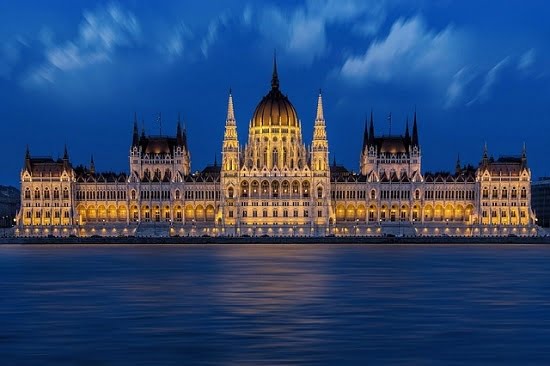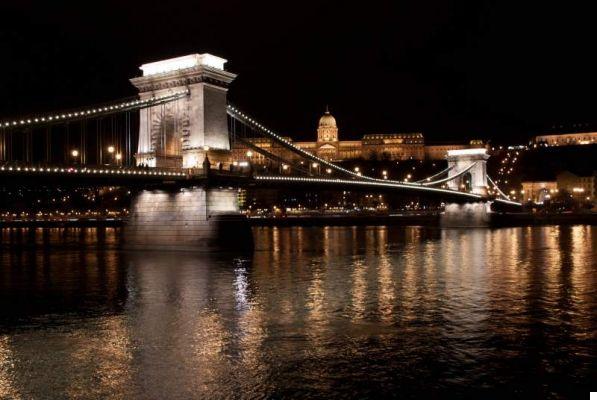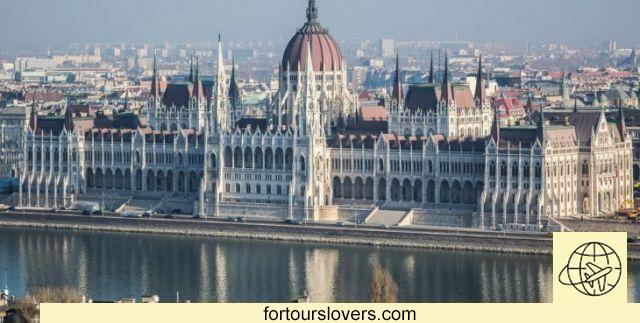
Budapest
10 things to do and see in Budapest and 1 not to do"Paris of the East" is certainly an apt comparison, but the most effective definition of Budapest, the one that best explains its peculiarity is "City-bridge". The bridge is the one between Eastern and Western Europe, the two parts of the old continent from whose "dialectic" - let's call it that - the fate of the West has always sprung. Of course, this liaison role is not unique to Budapest. Also Vienna e Prague they share the same historical destiny. With the first, Budapest has many features in common, especially from an architectural and urbanistic point of view; with the second, on the other hand, they share a greater social and tourist ferment than the Austrian capital. There is more: Budapest is not only a monumental city, deeply influenced by the cultural tradition of the Austro-Hungarian Empire; in addition to the churches and monuments, there is no visit to the city that does not include a stop in one of its countless ones thermal parks. Yes, because in case you didn't know, in Budapest you can enjoy a outdoor thermal bath with the snow-capped peaks all around. In short, a wonderful city in whose "belly" there are also others cultural influences: That Romanian, That Turk and, above all, that Soviet. Enjoy the reading.
1 The Castle
Buda Castle (Budapest is the result of the unification in 1873 of the cities of Buda, Obuda and Pest) is the perfect compendium of the history of the city. The first building dates back to the 1243th century, to be precise XNUMX, and was decided by King Béla IV of Hungary horrified by the looting committed two years earlier by the Mongols against nearby Pest. From 1410 to 1420, however, there was the first major expansion of the fortress by the will of Sigismund of Luxembourg, king of the Holy Roman Empire. The result was a castle so impregnable that the Ottomans architects, in 1541, of the conquest of Budapest, they managed to penetrate it only after capitulation. There were enormous damage in 1686 during the furious war that saw opposites Christians e Muslims and which ended with the expulsion of the latter after over a century of absolute dominion over the city. It was not until 1715 that the building in style began barocco of the Castle which continued throughout the XNUMXth century. The nineteenth century, however, was characterized by riots of 1848 for independence from the Habsburg Empire. The circumstance slowed down the extension works to the structure with the subsequent addition of works in neoclassical style to the previous baroque layout. Finally, the terrible battle between the Germans and the Russians during the Second World War with the palace, as at other times in its history, reduced to rubble. These, in a nutshell, are the significant stages of the Budapest Castle which, despite its troubled history, continues to be the historical-cultural symbol of the capital, and therefore of the entire Hungarian nation. Inside of, churches, public buildings, medieval palaces and, especially the Historical museum and National Gallery (see next paragraph).
2 National Gallery
The National Gallery is located inside the Budapest Castle. The Museum occupies four rooms of the palace and houses the most important works of Magyar art from antiquity to today. Very interesting the Lapidarium on the first floor, a rich collection of stone artifacts dating back to the Roman period and found during the reconstruction of the fortress. Among the many works present, worthy of particular mention are the reliefs King's Mattia Corvino (ruler of Hungary from 1458 to 1490) and his wife Beatrice of Aragon. Towards these two figures the historical judgment of the Hungarians is unanimously positive. In particular towards "Mattia The Just", so the king was called for his magnanimity and attention to the needs of the people. It is not over because the gallery hosts many Late Gothic altarpieces and some of the most important works created by great national artists in the nineteenth and twentieth centuries: above all, Mihály Munkácsy e László Paál. The Gallery is open from Tuesday to Sunday from 10.00 to 18.00. Closed on Mondays. For more information on history, collections, temporary exhibitions and entrance fees visit the English version of the official website: Hungarian National Museum.
3 Chain Bridge
Among the city symbols there is not only the Castle. Also not to be missed is the "Chain Bridge" built to connect the two towns of Buddha e Pest. To commission the work in 1849 was the Count István Széchenyi regretted - it is said - for not having reached his dying father across the river in time (Danube). In fact for a long time the only connection between the two towns was a mobile bridge whose use was limited to the summer. Winter temperatures often prevented the crossing due to ice, with inevitable negative repercussions on the connections of people and goods. Thanks to the expertise of William e Adam Clark, the two Scottish engineers (only with the same name) in charge of the construction of the work, "came out" a wonderful infrastructure whose charm does not leave tourists indifferent. During the Second World War the bridge was blown up by the Germans to block the Russian advance, but in 1949 its reconstruction was taken care of. Finally a curiosity. To reach the Castle from the Chain Bridge it takes only three minutes by funicular. A significant saving of time and effort that alone does not explain the long lines for tickets in Clark Adam square, especially during the summer. And the retro charm of the "Budavari Siklo”Which fascinates thousands of tourists. Built in 1870, the funicular was also destroyed by the Germans during the Second World War. Forty years had to pass to see it working again in 1986.
4 The Basilica of Santo Stefano
Se Budapest is one of the most photographed cities in the world, part of the credit goes to the Basilica of Santo Stefano. Precious marbles, mosaics, stuccos and golden decorations contribute to the charm of this neoclassical style church which can accommodate up to 8000 faithful. To see the "Chapel of the Holy Right", to the left of the main altar, and the dome, reachable on foot or by four comfortable lifts. In the first there is a glass case with the mummified right hand of Saint Stephen, patron of the city and the nation. From the dome, however, there is a wonderful view of Pest with the detail from the top of the square in front of the church. Finally one curiosity. The dome, 96 meters long, equalizes the height of the Parliament building as if to symbolize the parity between "spiritual" and "temporal" power. For more information on the history, opening times and prices of the visit, consult the official website of the Basilica: www.bazilika.biz
5 Andrassy Boulevard
Se Budapest and the Paris of the East, Andrassy Boulevard worth the Champs Élisées. Compare this aside avenue of over two kilometers is by far the most beautiful walk and famous throughout Hungary. It is no coincidence thatUnesco in 2002 he added the street to the list of assets World Heritage Site. In addition to the cultural data, however, there is also the commercial one: a large part of the shops are concentrated along this avenue cafes, restaurants, theaters e luxury boutique present in the city. It is therefore curious to observe how the most glamorous street in Budapest, which has always been frequented by tourists and middle-high-end residents, during the Soviet occupation was named first after Stalin and then after the People's Republic of Hungary. In 1990, the return to the old toponymy: the Hungarian Count Gyula Andrassy famous for its liberal and modernizing ideas, as well as for the amorous liason with the Princess Sissi, the beautiful Elizabeth of Austria-Hungary. Not to be missed!
6 The Synagogue
The Great Synagogue is undoubtedly one of unmissable stops of Budapest. Not just because it is the largest in Europe (and one of the largest in the world), but also because it represents one of the most vivid evidence of the greatness of Jewish culture in continental Europe. The grandeur and the architectural style of the building (built between 1854 and 1859) speak for themselves: one miscellany of styles holding together Byzantine, Gothic, Romanesque e Moorish summarizing in itself all the influences that Budapest has absorbed over the centuries. Including the Holocaust tragedy, represented by the sculpture of the Hungarian artist Varga Imre. A weeping willow where the names of all the Hungarian victims of the extermination perpetrated by the Nazis against the Jews during the Second World War are engraved. The work is placed in Jewish cemetery annexed to the synagogue which, we recall, is located in via Dohany not far from the famous avenue named after the count Gyula Andrassy (see previous paragraph). In addition, near the synagogue there is also the Jewish Museum with a rich collection of objects related to the customs and traditions of the Jewish community of Budapest. Not to be missed!
7 Városliget Park
One hundred and twenty hectares of park in the city center. An urban detail that alone explains thehigh quality of life of the Hungarian capital. There's a lake, which in winter becomes a fully equipped ice skating rink; there are about ten restaurants; the Doll Museum; the Vajdahunyad Castle; the zoo and many other attractions. Above all there are the Széchenji baths, the biggest thermal complex of the city, dating back to 1881. The Széchenji baths are not the only spas in Budapest (see next paragraph). Certainly, however, they are the most famous among outdoor pools (very popular even in winter), indoor pools e saunas. The neo-baroque style of the structure does the rest contributing to the sense of wonder of those who find themselves in the presence of this for the first timesui generis environment. In short, Budapest is a city that really lacks nothing: museums, monuments, green areas and thermal waters to restore the body and mind from the ailments of age and the stress of everyday life. Seeing is believing!
8 The thermal baths
Visiting Budapest without trying at least one of its famous spas is tantamount to not having done so. There are many travel magazines, sites and blogs to underline this aspect and, beyond the more or less emphatic tones, the warning makes sense. Not only from the curative point of view which, of course, remains the most important; but precisely from a cultural point of view, considering the millenary roots of the Hungarian spa tradition. Celts, Romans, Turks, Austro-Hungarians: there is no people and domination that has not added something of its own to the thermal complexes that were gradually being built in the city. In addition to the already mentioned Széchenyi baths, the Kiraly spa and Rudas baths, where the Turkish imprint is most evident, and the complex Palatinus on 'Margaret Island, small strip of land on the Danube famous, in fact, for its 11 outdoor swimming pools which are very popular especially during the summer. There is also no shortage hotel with internal spa department (see photo) to combine stay and treatment. If you are looking for a hotel click here to consult the list.
9 Danube tour
In a list of things to do and see in Budapest, you cannot miss the tour of the Danube. Several formula proposed by the two companies (Legenda and Mahart) that carry out the transhipment. Day and evening trips with aperitif, music and dinner. In short, there is something for all tastes and needs as it should be in a city come on large tourist numbers which Budapest became in a few years after the dissolution of the Soviet bloc. To do!
10 Communist Budapest
Mark theisland of Csepel, Park of the Statues and House of Terror. It is in these places that you must go if you want to know the"Other Budapest", the recent communist past to which he has suddenly turned his back and of which, however, many traces still remain. Csepel is the largest of the Danube islands. Today, between restaurants and thermal parks, it actively participates in the tourist present of the city but it is here, on this 48 km long island, that the Hungarian Communist government created some of its large factories. In just over twenty years, heavy industry has disappeared, transforming itself very quickly into finds of industrial archeology which, in any case, are interesting from a historical and architectural point of view. The Park of the Statues, on the other hand, houses almost all the statues that “adorned” the city during the communist dictatorship. The "Memento Park" - so it's called - is located about half an hour from the center of Budapest and is well connected both by bus and by subway (another important testimony of the communist regime). The House of Terror (Terror Haza Muzeum), finally, is located near via Andrassy and is a modern museum exhibition that traces the atrocities and distortions of the two regimes that have marked the life of Hungary: the Nazi one and the communist one which lasted much longer. For more information: www.mementopark.hu - www.terrorhaza.hu
1 Don't limit yourself to the "usual laps"
There are so many things to do and see in Budapest that ours, inevitably, is one list partial. A list that focuses on some of the main attractions even though we tried to give "straight" relatively less touristy. Others, however, like Vaci Utca, the busiest street in the city, we have not included them because it is impossible not to happen to us. Here, here's the thing: don't just limit yourself to movida. Among other things, via Vaci is known for a particular form of enticement: more or less attractive women approach children and adults in an informal tone, inviting them for a drink. Except that that "something" risks being very expensive: in fact, underneath there is an agreement with the manager of the complacent restaurant. Not just with him. Even with the thugs who, if necessary, force the unfortunate person on duty to withdraw from the nearest ATM to pay the bill. That said, don't worry. The phenomenon is waning and, if we want to be honest, it stems from an equally hateful prejudice: the belief, that is, that Hungarians are on average more available than other Eastern European women (at the limit they are more beautiful on average, even if it is stupid make rankings of this kind). Therefore it is enough to remain yourself, not to give confidence to those who suddenly approach, enjoy the city far and wide.




